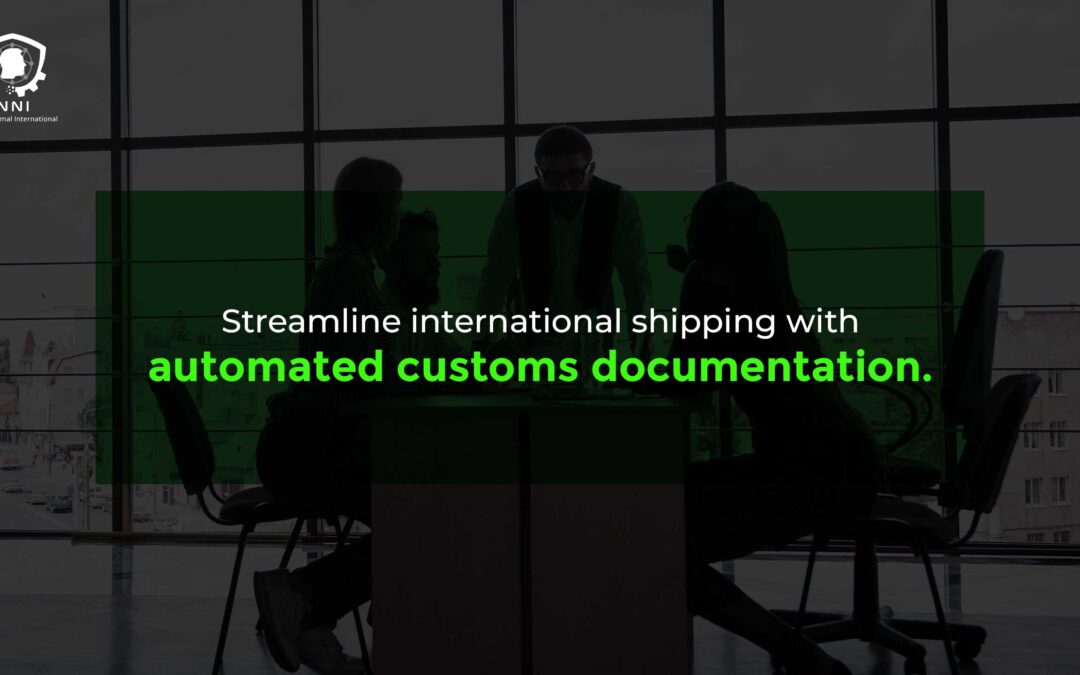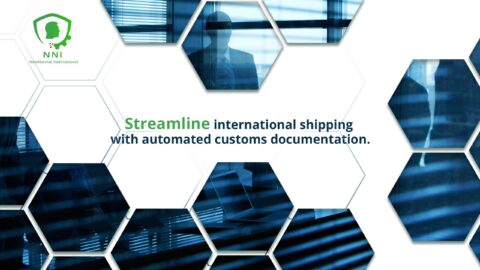Embracing Efficiency in Global Trade through Streamlining International Shipping with Automated Customs Documentation
The Need for Speed in International Shipping
In today’s fast-paced global market, efficiency in international shipping is not just a luxury, it’s a necessity. Businesses are constantly seeking ways to expedite processes while ensuring compliance with international trade regulations.
Automated Customs Documentation: A Game Changer
In today’s globalized and interconnected world, customs clearance has become an increasingly complex and time-consuming process for businesses engaged in international trade. Manual customs documentation, often involving a multitude of forms, regulations, and data entry, can lead to delays, errors, and increased costs, hindering the smooth flow of goods across borders. To navigate these complexities and streamline their international operations, businesses are increasingly turning to automated customs documentation, a transformative approach that leverages technology to simplify, expedite, and optimize customs clearance processes.
At the heart of automated customs documentation lies the power of technology to seamlessly integrate and automate various aspects of the customs clearance process. This integration encompasses:
Data Collection and Pre-population: Automated systems can extract and pre-populate customs documentation with relevant data from various sources, such as invoices, shipping manifests, and product specifications, reducing manual data entry and minimizing the risk of errors.
Rule-based Validation and Compliance: Automated systems can apply rule-based validation checks to ensure that customs documentation adheres to the specific requirements and regulations of the destination country, reducing the risk of delays and penalties due to non-compliance.
Electronic Document Submission and Tracking: Automated systems facilitate the electronic submission of customs documentation, eliminating the need for paper forms and manual handling, streamlining the process and enabling real-time tracking of customs clearance status.
Risk Management and Automated Audit Trails: Automated systems can integrate risk management algorithms to identify potential compliance issues and trigger in-depth reviews, while maintaining comprehensive audit trails for regulatory compliance and traceability.
Integration with Existing Systems: Automated customs documentation systems can seamlessly integrate with existing enterprise resource planning (ERP) and supply chain management (SCM) systems, ensuring a smooth flow of data and eliminating the need for manual data re-entry.
The benefits of automated customs documentation extend far beyond mere efficiency gains; they encompass a wide spectrum of operational advantages for businesses, including:
Reduced Shipping Costs: Automated customs documentation streamlines the process, reducing delays, penalties, and the need for costly corrective actions, leading to overall cost savings and improved profitability.
Enhanced Supply Chain Visibility: Automated systems provide real-time tracking of customs clearance status, enabling businesses to optimize their supply chains, reduce inventory levels, and make informed decisions based on timely insights.
Improved Customer Satisfaction: Automated customs documentation contributes to faster and more reliable delivery times, enhancing customer satisfaction and loyalty.
Risk Mitigation and Regulatory Compliance: Automated systems reduce the risk of non-compliance, penalties, and potential legal issues, safeguarding the business’s reputation and protecting its bottom line.
Competitive Advantage: Automated customs documentation provides a competitive edge, enabling businesses to respond quickly to market demands and expand into new markets with greater agility and efficiency.
In essence, automated customs documentation is not merely a technological upgrade; it is a strategic imperative for businesses seeking to navigate the complexities of international trade with efficiency, precision, and a focus on compliance. By embracing automated customs documentation, businesses can streamline their operations, enhance supply chain visibility, reduce costs, and gain a competitive advantage in the global marketplace.
Understanding Automated Customs Documentation
At its core, automated customs documentation involves using software solutions to generate necessary documents for international trade. This includes customs declarations, bills of lading, and other essential paperwork.
The Impact of Automation on Business Efficiency
Automation in customs documentation directly translates to increased efficiency for businesses. It minimizes manual data entry, cuts down processing times, and significantly reduces the likelihood of errors that can cause delays and financial penalties.
Case Studies: Success Stories in Automation
Illustrative examples of companies that have successfully implemented automated customs documentation can highlight the tangible benefits of this approach.
Compliance and Risk Management
Beyond efficiency, automated systems ensure compliance with the ever-changing landscape of international trade laws and regulations, mitigating risks associated with violations.
The Future of International Trade: Technology-Driven Solutions
Integrating Advanced Technologies
The integration of technologies such as AI and blockchain with automated documentation systems represents the future of international shipping.
Overcoming Challenges in Implementation
While the benefits are clear, challenges in implementation, such as initial investment costs and training, need to be addressed for seamless adoption.
Strategies for Successful Implementation
Strategies to overcome these challenges, such as phased implementation and employee training programs, are crucial for businesses to fully reap the benefits of automated customs documentation.
The Competitive Edge in Global Shipping
In the global marketplace, the ability to quickly and accurately handle customs documentation can provide a significant competitive edge.
Conclusion Streamlining International Shipping with Automated Customs Documentation
The integration of automated customs documentation systems is not just a trend but a necessary evolution in international shipping. Businesses that embrace this technology will lead the way in efficiency, compliance, and global success.
#InternationalShipping, #TradeEfficiency, #CustomsAutomation, #GlobalTrade











